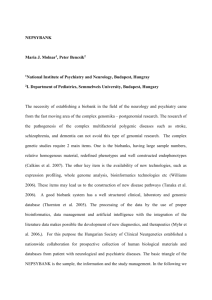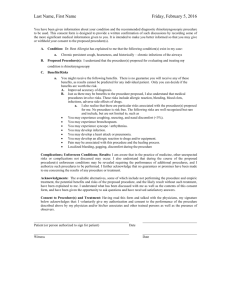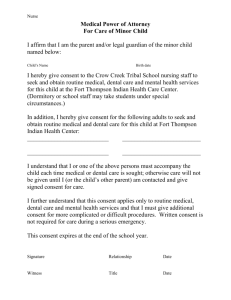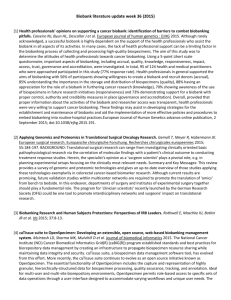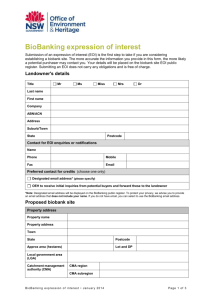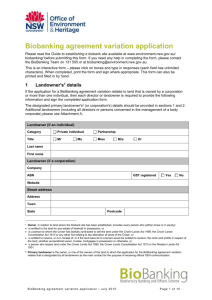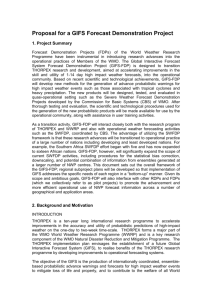Week 48 (2015-11-23)
advertisement
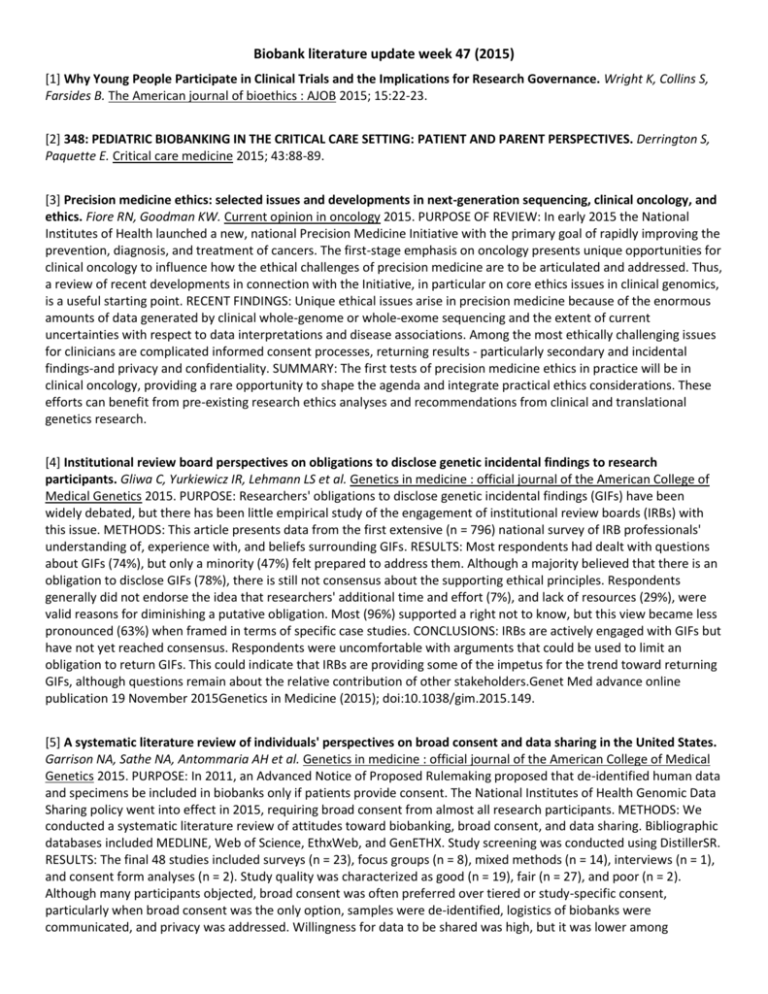
Biobank literature update week 47 (2015) [1] Why Young People Participate in Clinical Trials and the Implications for Research Governance. Wright K, Collins S, Farsides B. The American journal of bioethics : AJOB 2015; 15:22-23. [2] 348: PEDIATRIC BIOBANKING IN THE CRITICAL CARE SETTING: PATIENT AND PARENT PERSPECTIVES. Derrington S, Paquette E. Critical care medicine 2015; 43:88-89. [3] Precision medicine ethics: selected issues and developments in next-generation sequencing, clinical oncology, and ethics. Fiore RN, Goodman KW. Current opinion in oncology 2015. PURPOSE OF REVIEW: In early 2015 the National Institutes of Health launched a new, national Precision Medicine Initiative with the primary goal of rapidly improving the prevention, diagnosis, and treatment of cancers. The first-stage emphasis on oncology presents unique opportunities for clinical oncology to influence how the ethical challenges of precision medicine are to be articulated and addressed. Thus, a review of recent developments in connection with the Initiative, in particular on core ethics issues in clinical genomics, is a useful starting point. RECENT FINDINGS: Unique ethical issues arise in precision medicine because of the enormous amounts of data generated by clinical whole-genome or whole-exome sequencing and the extent of current uncertainties with respect to data interpretations and disease associations. Among the most ethically challenging issues for clinicians are complicated informed consent processes, returning results - particularly secondary and incidental findings-and privacy and confidentiality. SUMMARY: The first tests of precision medicine ethics in practice will be in clinical oncology, providing a rare opportunity to shape the agenda and integrate practical ethics considerations. These efforts can benefit from pre-existing research ethics analyses and recommendations from clinical and translational genetics research. [4] Institutional review board perspectives on obligations to disclose genetic incidental findings to research participants. Gliwa C, Yurkiewicz IR, Lehmann LS et al. Genetics in medicine : official journal of the American College of Medical Genetics 2015. PURPOSE: Researchers' obligations to disclose genetic incidental findings (GIFs) have been widely debated, but there has been little empirical study of the engagement of institutional review boards (IRBs) with this issue. METHODS: This article presents data from the first extensive (n = 796) national survey of IRB professionals' understanding of, experience with, and beliefs surrounding GIFs. RESULTS: Most respondents had dealt with questions about GIFs (74%), but only a minority (47%) felt prepared to address them. Although a majority believed that there is an obligation to disclose GIFs (78%), there is still not consensus about the supporting ethical principles. Respondents generally did not endorse the idea that researchers' additional time and effort (7%), and lack of resources (29%), were valid reasons for diminishing a putative obligation. Most (96%) supported a right not to know, but this view became less pronounced (63%) when framed in terms of specific case studies. CONCLUSIONS: IRBs are actively engaged with GIFs but have not yet reached consensus. Respondents were uncomfortable with arguments that could be used to limit an obligation to return GIFs. This could indicate that IRBs are providing some of the impetus for the trend toward returning GIFs, although questions remain about the relative contribution of other stakeholders.Genet Med advance online publication 19 November 2015Genetics in Medicine (2015); doi:10.1038/gim.2015.149. [5] A systematic literature review of individuals' perspectives on broad consent and data sharing in the United States. Garrison NA, Sathe NA, Antommaria AH et al. Genetics in medicine : official journal of the American College of Medical Genetics 2015. PURPOSE: In 2011, an Advanced Notice of Proposed Rulemaking proposed that de-identified human data and specimens be included in biobanks only if patients provide consent. The National Institutes of Health Genomic Data Sharing policy went into effect in 2015, requiring broad consent from almost all research participants. METHODS: We conducted a systematic literature review of attitudes toward biobanking, broad consent, and data sharing. Bibliographic databases included MEDLINE, Web of Science, EthxWeb, and GenETHX. Study screening was conducted using DistillerSR. RESULTS: The final 48 studies included surveys (n = 23), focus groups (n = 8), mixed methods (n = 14), interviews (n = 1), and consent form analyses (n = 2). Study quality was characterized as good (n = 19), fair (n = 27), and poor (n = 2). Although many participants objected, broad consent was often preferred over tiered or study-specific consent, particularly when broad consent was the only option, samples were de-identified, logistics of biobanks were communicated, and privacy was addressed. Willingness for data to be shared was high, but it was lower among Biobank literature update week 47 (2015) individuals from under-represented minorities, individuals with privacy and confidentiality concerns, and when pharmaceutical companies had access to data. CONCLUSIONS: Additional research is needed to understand factors affecting willingness to give broad consent for biobank research and data sharing in order to address concerns to enhance acceptability.Genet Med advance online publication 19 November 2015Genetics in Medicine (2015); doi:10.1038/gim.2015.138. [6] A multi-institution evaluation of clinical profile anonymization. Heatherly R, Rasmussen LV, Peissig PL et al. Journal of the American Medical Informatics Association : JAMIA 2015. BACKGROUND AND OBJECTIVE: There is an increasing desire to share de-identified electronic health records (EHRs) for secondary uses, but there are concerns that clinical terms can be exploited to compromise patient identities. Anonymization algorithms mitigate such threats while enabling novel discoveries, but their evaluation has been limited to single institutions. Here, we study how an existing clinical profile anonymization fares at multiple medical centers. METHODS: We apply a state-of-the-art k-anonymization algorithm, with k set to the standard value 5, to the International Classification of Disease, ninth edition codes for patients in a hypothyroidism association study at three medical centers: Marshfield Clinic, Northwestern University, and Vanderbilt University. We assess utility when anonymizing at three population levels: all patients in 1) the EHR system; 2) the biorepository; and 3) a hypothyroidism study. We evaluate utility using 1) changes to the number included in the dataset, 2) number of codes included, and 3) regions generalization and suppression were required. RESULTS: Our findings yield several notable results. First, we show that anonymizing in the context of the entire EHR yields a significantly greater quantity of data by reducing the amount of generalized regions from approximately 15% to approximately 0.5%. Second, approximately 70% of codes that needed generalization only generalized two or three codes in the largest anonymization. CONCLUSIONS: Sharing large volumes of clinical data in support of phenome-wide association studies is possible while safeguarding privacy to the underlying individuals. [7] The evolution of withdrawal: negotiating research relationships in biobanking. Melham K, Moraia LB, Mitchell C et al. Life Sci Soc Policy 2014; 10:16. The right to withdraw from research, along with the necessity of adequately informed consent, is at the heart of the post-Nuremburg code of ethical safeguards in biomedical research on human participants. As biomedical research moves away from direct interventional studies towards research using networks of linked human tissue samples and data, however, questions arise about what withdrawal can and should mean in these new contexts. Some of the more expansive traditional understandings, such as the right to withdraw from a study 'at any time' are limited in practice by the nature of biobank- supported research, particularly where it makes possible widespread dissemination and ongoing reuse of data. It is time for a more nuanced, granular arrangement for withdrawal, appropriate to the ongoing relationships between participants and long-term biobanking enterprises. [8] Quality improvement and practice-based research in neurology using the electronic medical record. Maraganore DM, Frigerio R, Kazmi N et al. Neurology. Clinical practice 2015; 5:419-429. We describe quality improvement and practice-based research using the electronic medical record (EMR) in a community health system-based department of neurology. Our care transformation initiative targets 10 neurologic disorders (brain tumors, epilepsy, migraine, memory disorders, mild traumatic brain injury, multiple sclerosis, neuropathy, Parkinson disease, restless legs syndrome, and stroke) and brain health (risk assessments and interventions to prevent Alzheimer disease and related disorders in targeted populations). Our informatics methods include building and implementing structured clinical documentation support tools in the EMR; electronic data capture; enrollment, data quality, and descriptive reports; quality improvement projects; clinical decision support tools; subgroup-based adaptive assignments and pragmatic trials; and DNA biobanking. We are sharing EMR tools and deidentified data with other departments toward the creation of a Neurology Practice-Based Research Network. We discuss practical points to assist other clinical practices to make quality improvements and practice-based research in neurology using the EMR a reality.

